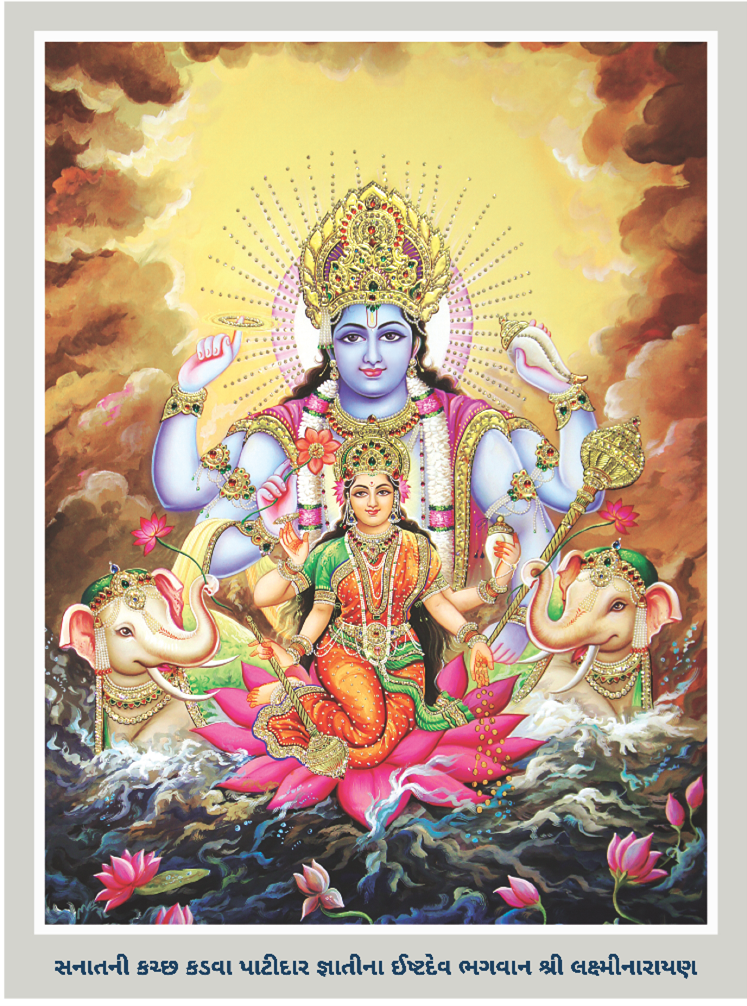After freeing the community from Syed Imamshah Bawa and the Satpanth religion, Sant Odhavram Maharaj faced the question of which branch of Hinduism the community should be associated with.
The community’s history and situation is such that it mainly consisted of people who were superstitious, ignorant, and easily fooled by miracles. They believed that whatever the bavo (a deity) provided would give them fruits and lead to Amarapuri/Bhesta (paradise) after death. Due to their false greed, the community was blinded to such an extent that they were willing to be completely exploited by Pirana’s uncles and Syeds. They became accustomed to being ruled by their agents, oppressive Gedheras, Mukhis, and community Patels. This made them lose their self-respect and the self-confidence they needed to make their own religious decisions.
Hence, it was crucial for Odhavaram Bapa to propose a solution that not only addressed the current community-related issue but also prevented such a situation from arising in the future. Additionally, the solution should not require any significant changes in faith, as the community had already promised Vishrambapa Nakarani of Sikra to celebrate Krishna Janmashtami in a specific way. 
The search was for a branch of Sanatan Dharma that has no owner, founder or human master. This is because if there is a founder or guru, it becomes the duty of the disciples to fulfill their promise. If the community has been freed from a guru like Imamshah, then it should not be subjected to another guru. It was necessary to connect the community to the roots of Sanatan Dharma and keep the control of the community’s religious system completely in their hands.
It was within the power of Sant Odhavaram Maharaj to guide this particular community towards his Harihara tradition, and to redirect the funds that were given to him as mandatory Dashond and religious taxes in Satpanth. However, the communit was deeply rooted in their religious beliefs and were unaware of their decline. Essentially, the community system held a strong grip over them.He was not a selfish and self-absorbed hypocrite who used community as a means to generate income for his descendants or to gain control over the throne of Vandhay. In fact, he was a true saint who dedicated his life to community reform. He had given properties to the K.K.P. community, including Haridwar’s Kutch Lal Rameshwar Ashram, Badrinath’s Ordi and Bandhay’s Umiya Mataji Temple. Further information about his sacrifice for community reform can be found in a separate article titled “A Debt Of Gratitude Towards Vandhay” in this book.
The K. K. P. Sanatani community has been an invaluable source of guidance since separating from the Satpanth group. They have helped their followers achieve self-sufficiency, break free from economic exploitation, and revive Sanatan religion, education, and social systems. Sant Odhavaram Maharaj was a generous saint who emphasized the importance of self-reliance rather than begging, and his teachings continue to influence us to this day. I believe that his watchful and benevolent presence is always with us.
After careful consideration, Sant Odhavaram Maharaj advised the community to adopt Lord Lakshminarayana as their Ishtadev. Lord Lakshminarayana is considered the Nirguna formless form of God in Hinduism, and therefore eternal, with no founder or one who holds a monopoly to run its tradition. As the community had been worshipping Narayana (Krishna Janmashtami) for years, they were advised to worship the original form of Narayana as their Ishtadev.
Odhavaram Bapa offered a valuable solution to the community system by suggesting that Lord Lakshminarayan should be worshipped as Ishtadev. By doing so, the community would not be at risk of falling under the influence of any misguided religious leaders or being led astray from Sanatan Dharma. By keeping the roots of Hinduism strong, the community will always be sheltered by the vast canopy of the Hindu religion.
|| Jai Lakshminarayan ||

